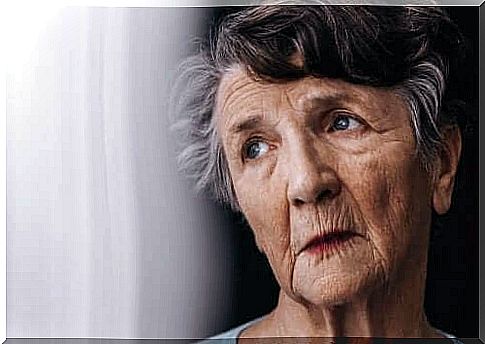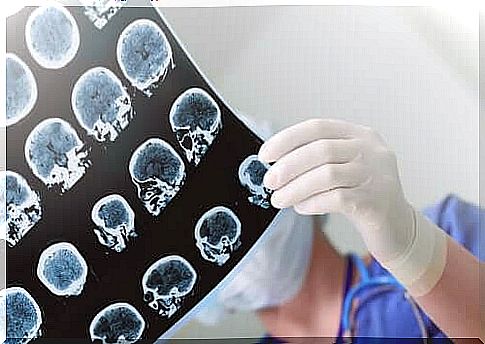The Difference Between Dementia And Alzheimer’s

Did you know that dementia and Alzheimer’s are different diseases? However, it is true that there are symptoms of dementia in both. In this article, we will look at the similarities and differences between the two.
First, what is dementia?
Dementia
Dementia is the loss of cognitive function, including thinking, memory, and reasoning.
It also includes the loss of certain behaviors to such an extent that it disrupts a person’s daily life and activities. Such features include memory, language skills, visual perception, problem solving, self-control, and the ability to focus and pay attention.
Other essential features affected by dementia are task planning and execution, abstract thinking, emotional regulation, and resistance to fatigue.
Often, people with dementia can no longer control their emotions, and their personality changes frequently. They simply become different people.
Dementia ranges in severity from the mildest stage – when it has just begun to affect a person’s function – to the most severe stage, where the person is completely dependent on others for the basic activities of daily living.
There are several possible causes of dementia. Among them are Alzheimer’s, vascular diseases and other diseases of the central nervous system.
Dementia and Alzheimer’s
Now we continue to define dementia and Alzheimer’s to clarify the distinction between them.
Dementia is not a specific disease, but a set of symptoms that include impaired memory and other cognitive abilities. These symptoms are severe enough to interfere with a person’s daily routine.

As such, dementia can be caused by various diseases. Thus, it may stem from Alzheimer’s or vascular disease or a condition of the central nervous system.
Dementia mainly occurs in the elderly. However, according to specialists, dementia can affect people of all ages.
Alzheimer’s disease
Alzheimer’s is another type of dementia. However, it is characterized by loss of neurons. Therefore, it involves the loss of synaptic density (synapse refers to the connection between two neurons).
In addition, various substances, such as amyloid material, lie in the nerve tissue when a person has Alzheimer’s. Changes in neurotransmitters also occur, leading to atrophy of the cerebral cortex.
The location of the disease
Alzheimer’s is a cortical type of dementia. Thus, it is the gray matter that is affected. Therefore, the functions controlled by gray matter (cortex) are affected. These mainly include judgment, memory, language, attention and concentration.

Dementia, on the other hand, can be cortical or subcortical. In addition to affecting the above functions, it can also affect the functions controlled by the subcortical brain layer. These include psychomotorism, emotions, slowness, apathy and memory loss.
There are also two circumstances that are characteristic of subcortical dementia:
- Apraxia: Loss of the ability to move as usual.
- Agnosia: Loss of the ability to recognize stimuli.
In addition, almost all forms of dementia change as they develop.
Alzheimer’s course
The clinical picture of a course with Alzheimer’s develops over approx. 5 to 10 years.
In addition, it develops in steps:
- The first phase involves a decrease in resistance to fatigue and adaptability to certain activities. Then forgetfulness and negativity appear. The disease comes with worry and anxiety.
- In the second phase, it is difficult to adapt to certain tasks. There may also be a loss of attention, concentration, memory along with depressive events.
- In the third phase, there is a decrease in the ability to adapt to ordinary tasks. In addition, affected people may begin to experience emotional imbalance.
- In the fourth phase, the ability to adapt to ordinary tasks is already markedly weakened. The person may no longer be aware of his illness and of the changes in personality.
- In the fifth stage , people experience severe cognitive impairment.
- Finally, in the sixth stage, a person with Alzheimer’s no longer recognizes their relatives and is completely dependent on help.
Development of dementia
On the other hand, vascular dementia develops due to short-term ischemic accidents (TIA). This means that the damage is cumulative and the development is intermittent. Sharp declines in the superior functions of the brain followed by stabilization periods can occur.
Meanwhile, other types of dementia are due to more specific diseases of the nervous system. How they progress thus often depends on their context.
One of the differences between dementia and Alzheimer’s is that, in general, Alzheimer’s is a disease that develops slowly. However, dementia can develop gradually (if it is actually Alzheimer’s), periodically (if it is due to vascular disease) or depending on the specific diseases of the nervous system.
Epidemiology of dementia and Alzheimer’s
Lastly, Alzheimer’s dementia tends to affect more women than men. However, dementia affects men more if the cause is vascular.
Currently, there is no cure for dementia or Alzheimer’s. However, there are treatments for symptoms. The research continues. Although current Alzheimer’s treatments cannot prevent it from progressing, they can temporarily slow the symptoms and improve the quality of life for those affected by the condition and for their carers.
Fortunately, there is a worldwide effort to find better treatments for dementia and Alzheimer’s, delay their onset and prevent them in general.









